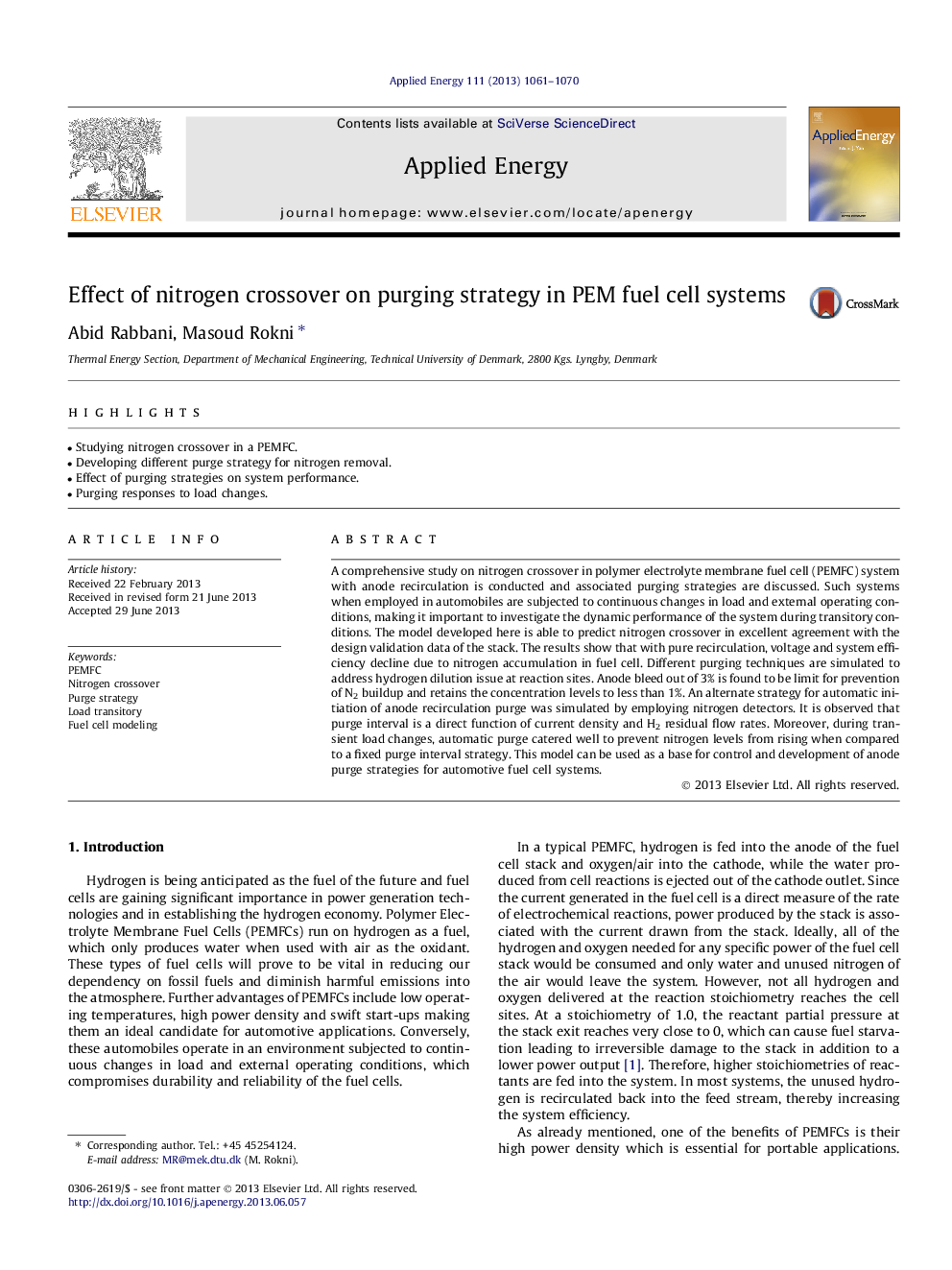| Article ID | Journal | Published Year | Pages | File Type |
|---|---|---|---|---|
| 6692663 | Applied Energy | 2013 | 10 Pages |
Abstract
A comprehensive study on nitrogen crossover in polymer electrolyte membrane fuel cell (PEMFC) system with anode recirculation is conducted and associated purging strategies are discussed. Such systems when employed in automobiles are subjected to continuous changes in load and external operating conditions, making it important to investigate the dynamic performance of the system during transitory conditions. The model developed here is able to predict nitrogen crossover in excellent agreement with the design validation data of the stack. The results show that with pure recirculation, voltage and system efficiency decline due to nitrogen accumulation in fuel cell. Different purging techniques are simulated to address hydrogen dilution issue at reaction sites. Anode bleed out of 3% is found to be limit for prevention of N2 buildup and retains the concentration levels to less than 1%. An alternate strategy for automatic initiation of anode recirculation purge was simulated by employing nitrogen detectors. It is observed that purge interval is a direct function of current density and H2 residual flow rates. Moreover, during transient load changes, automatic purge catered well to prevent nitrogen levels from rising when compared to a fixed purge interval strategy. This model can be used as a base for control and development of anode purge strategies for automotive fuel cell systems.
Related Topics
Physical Sciences and Engineering
Energy
Energy Engineering and Power Technology
Authors
Abid Rabbani, Masoud Rokni,
